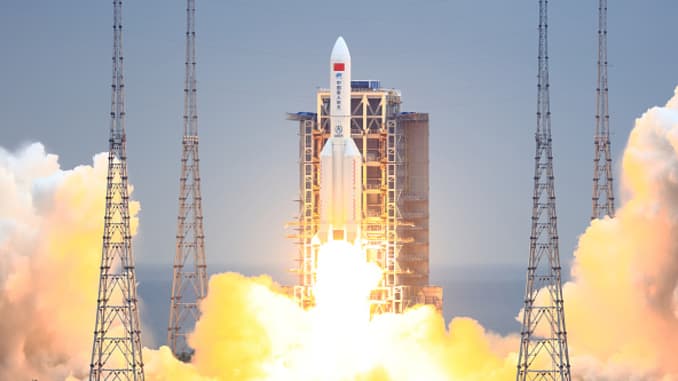Over the last weeks, scientists have speculated on the landing zone of debris from a Chinese rocket.
Due to its high velocity, it was difficult for experts to triangulate the re-entry time and location in advance. It’s potential trajectories were splayed across the globe, with a 1% chance of causing harm or injury to humans.
Thankfully, most of the debris was incinerated in the atmosphere. The remaining debris landed in the Indian Ocean, near the Maldives, on Sunday. It’s believed that all the debris missed any islands.
However, some people reported sightings of the rocket’s path in Oman and Israel.
The Long March 5B Rocket launched April 29 and carried the main module for the new space station. Typically, rocket boosters fire after detaching from their payload to ensure safe trajectory down to Earth.
Long March 5B’s booster was never built to fire. It actually operated as expected. Because friction was created by rubbing against the air of the upper atmosphere, it began orbiting Earth at an extremely fast velocity.
Because of this, the re-entry was completely uncontrolled. Experts across nations, including Bill Nelson from NASA, have been admonishing China for it’s irresponsible safety practices.
“It appears China won its gamble,” the astrophysicist John McDowell wrote. “But it was still reckless.”


